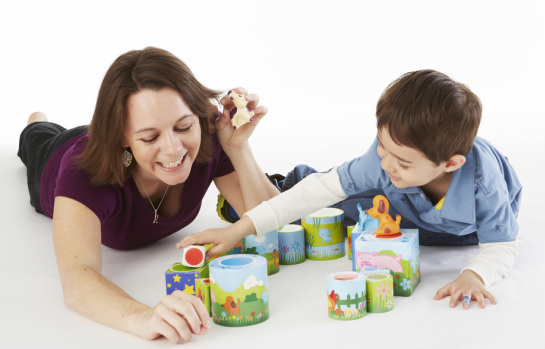How to Start a Home Play-based Therapy Program
- Commit to trying a home program out. (Making the decision and following through is one of the most powerful things you can do.)
- Find a place in your house that you can work with your child. (A quiet non-distracting room is best, but playing with your child is the most important, don't wait until you have the perfect room.)
- Designate a time that you will play with your child 1 on 1, uninterrupted. (This is the hardest part, if you can do this, you can do a home therapy program!) It's simply about making your child the priority for that time, decide to wait to do the dishes, turn off the TV, ignore facebook and your emails and give your child your undivided attention for at least 30 minutes.
- Go play! When you are playing, focus completely on your child. If your mind wanders to something else, acknowledge it, but then go back to focusing on your child. Really play for the benefit of enjoying and learning about your child. What makes them laugh, what makes them pause, what makes them back away? Try to be responsive and respectful. I often think of this type of play as "the golden rule", play with your child as you would have someone play with you. If they seem to enjoy what is happening, keep going, add even more goofiness! If your child is unresponsive and seems as if they aren't into the interaction, back off and find a way to enjoy what they are doing with them (or the same thing across the room) until them become interactive again. Being respectful of your child's verbal or non-verbal no is just as important as the interactions themselves in creating a relationship. Be easy on yourself, "dance like no one is watching," and reconnect to the give and take of childhood play. (Here are some easy go to games to try - tickle, balloons, bubbles, chase, horsey rides, or even better play something you know your child loves such as reenacting Star Wars) Start with one idea and just add on more and more as you play.
That's the basics! There are many more advanced techniques and lots of different types of developmental play based approaches to look into that have different ways of requesting and working on skills. I find all of them have benefit, the key is to try them out and see which one works for your child. Each child is different and will respond in different ways. I really find that the more in tune you are with your child, and the more fun you are having and not worrying too much about goals, you will find ways to model the skills you want to teach and your child will pick them up naturally.
You as the parent know more about your child then anyone, and because you love them and already have a relationship with them you are the perfect person to help them develop their relationship building skills in a supportive environment which is key for many children, especially those with autism. I guarantee that the time you spend with your child in this way will be worth it to you and them!!!!! I know that you have what it takes and all the resources you need to be successful in your home therapy program. If you find yourself looking for a little more guidance, an ear to bounce ideas off of, or a burst of inspiration. I am here for you.
Best wishes and Happy Playing!
Katrina


 RSS Feed
RSS Feed
